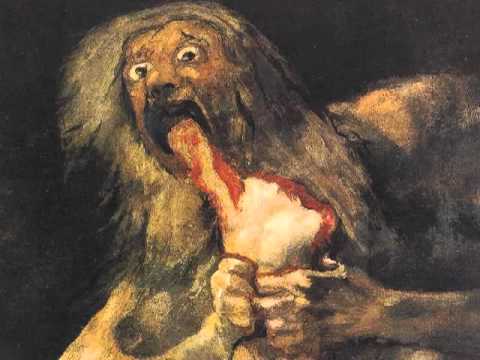10.21: Saturno devorando a uno de sus hijos
- Page ID
- 103334
Saturno devorando a uno de sus hijos es una de las “Pinturas Negras” que Goya pintó en las paredes de su casa a las afueras de Madrid. Esta imagen fue originalmente ubicada en la planta baja de la casa conocida como “la Quinta del Sordo”. Goya pintó en las paredes utilizando varios materiales incluyendo pintura al óleo. Las “Pinturas Negras” habían sufrido importantes daños y pérdidas en su ubicación original y cuando fueron retiradas de las paredes y trasladadas a la lona por el barón Émile d'Erlanger poco después de que compró la casa en 1873. Tenga en cuenta que Saturno también se conoce como Cronus o Kronus.
La Dra. Beth Harris y el Dr. Steven Zucker proporcionan una descripción, perspectiva histórica y análisis del Saturno Devorando a Uno De Sus Hijos de Goya.
Francisco de Goya y Lucientes, Saturno Devorando A Uno De Sus Hijos, 1821—23, pintura al óleo, 143.5 cm × 81.4 cm, (Prado, Madrid).
Colaboradores
- Goya, Saturno Devorando a Su Hijo. Autor: Dra. Beth Harris y Dr. Steven Zucker. Proporcionado por: Khan Academy. Ubicado en: www.khanacademy.org/humanities becoming-modern/romanticismo/romanticismo-in-spain/v/goya-saturn-devorar-uno-de-sus-hijos. Licencia: CC BY-NC-SA: Atribución-NoComercial-CompartirIgual


